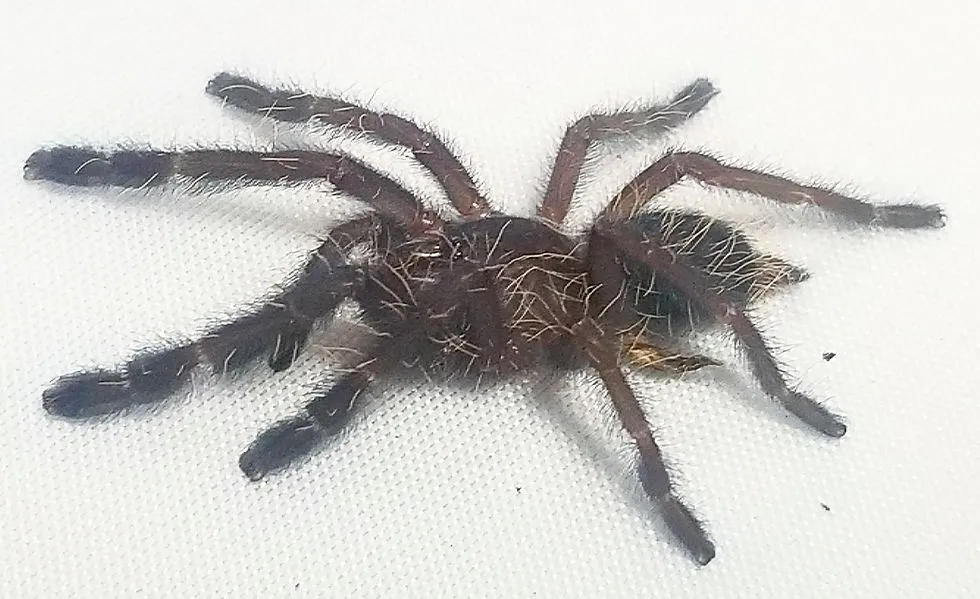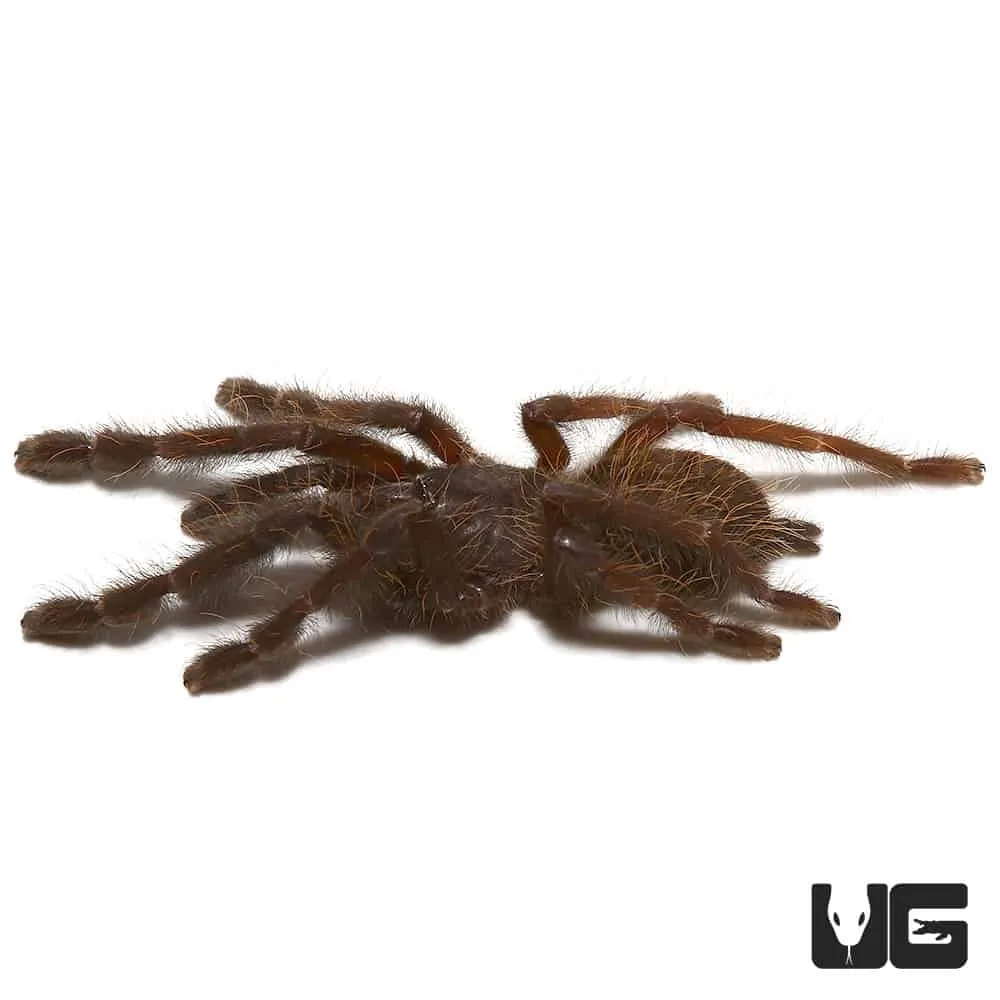Understanding the Sumatran Tiger Tarantula
The Sumatran Tiger Tarantula (Haplopelma vonwirthi) is a captivating species, known for its striking appearance and relatively manageable care requirements. Originating from the tropical regions of Sumatra, Indonesia, this tarantula has gained popularity among arachnid enthusiasts. Understanding its natural environment, behavior, and needs is crucial for providing the best possible care and ensuring a long, healthy life for your pet. This guide offers detailed insights into every aspect of Sumatran Tiger Tarantula care, from habitat setup to feeding and handling, to help you become a confident and informed owner.
What is a Sumatran Tiger Tarantula?
The Sumatran Tiger Tarantula is a terrestrial tarantula species, meaning it primarily lives on the ground. They are known for being a bit skittish, so providing them with proper hiding places and a secure environment is important. These tarantulas are burrowing species and enjoy creating elaborate underground retreats. Their temperament can vary; some individuals are more docile, while others may exhibit defensive behaviors. Understanding these traits is essential in creating a suitable environment.
Appearance and Characteristics

The Sumatran Tiger Tarantula is named for the distinct tiger-like pattern on its legs, featuring alternating bands of light and dark colors. Their carapace is typically a dark brown or black, with contrasting leg markings adding to their striking appearance. These tarantulas are medium to large in size, with mature females often reaching a leg span of up to 6-8 inches. Their bodies are covered with fine hairs, which help them detect vibrations and sense their surroundings. The Sumatran Tiger Tarantula, like all tarantulas, sheds its exoskeleton through a process called molting, during which it grows a new, larger body.
Choosing the Right Enclosure
A well-chosen enclosure is the foundation of successful Sumatran Tiger Tarantula care. The enclosure should provide a secure and comfortable environment, allowing your tarantula to thrive. Consideration of the size, type, and features of the enclosure is essential for the tarantula’s overall well-being. The right enclosure allows for the creation of optimal temperature, humidity, and access to food and water. Furthermore, the setup contributes to the tarantula’s behavior, helping to reduce stress and promoting natural activities such as burrowing.
Enclosure Size and Type
The size of the enclosure should be appropriate for the tarantula’s size. For a juvenile Sumatran Tiger Tarantula, a 5-gallon tank or a container with similar dimensions is often suitable. As the tarantula grows, the enclosure size should be increased. A good rule of thumb is to provide an enclosure that is at least three times the tarantula’s leg span in width. The enclosure should be well-ventilated but secure enough to prevent escape. Glass or acrylic terrariums are common choices, and a secure lid is essential. Ensure that the enclosure is escape-proof and provides enough floor space for burrowing.
Substrate and Decor

The substrate is the material that covers the bottom of the enclosure. For Sumatran Tiger Tarantulas, a substrate that allows for burrowing is essential. A mixture of peat moss, coco fiber, and a small amount of vermiculite is an excellent choice. The substrate should be deep enough to allow the tarantula to burrow comfortably. The depth of the substrate should be at least 6-8 inches. Decor can include cork bark, artificial plants, and other natural elements to provide hiding places and enrich the environment. Avoid sharp objects or materials that could harm the tarantula. The goal is to create a naturalistic environment that mimics the tarantula’s native habitat.
Maintaining the Ideal Habitat
Maintaining the correct environmental conditions is critical for the health and well-being of your Sumatran Tiger Tarantula. This involves monitoring and adjusting the temperature, humidity, and airflow within the enclosure. Regular checks and adjustments ensure the environment is suitable. Proper care also means providing the tarantula with the right conditions to thrive, including the creation of a comfortable and safe space. Regular maintenance, such as cleaning the enclosure and replacing the substrate as needed, contributes to the overall health of the tarantula.
Temperature and Humidity
Sumatran Tiger Tarantulas thrive in a warm and humid environment. The ideal temperature range is between 75-85°F (24-29°C). A heat source, such as a heat mat placed on the side of the enclosure, can be used to maintain this temperature. However, avoid placing the heat source directly under the enclosure, as this can overheat the substrate. Humidity levels should be kept between 60-70%. This can be achieved by misting the enclosure with water every few days, or by providing a water dish that is large enough to maintain humidity. A hygrometer is recommended to monitor humidity levels accurately. Keep an eye out for signs of excessive moisture or dryness.
Ventilation and Airflow

Adequate ventilation is crucial to prevent the buildup of mold and maintain air quality. Ensure that the enclosure has proper airflow. This can be achieved by using an enclosure with ventilation holes or a screen top. Avoid enclosures with excessive ventilation, as this can lead to the enclosure drying out too quickly. Regularly check the enclosure for condensation. If the enclosure has too much condensation, increase ventilation. Make sure the ventilation is not excessive, as this can lead to a dry environment that can be detrimental to the tarantula’s health. Proper ventilation supports the tarantula’s respiration and maintains a healthy environment.
Feeding Your Sumatran Tiger Tarantula
Proper nutrition is fundamental to the health and development of a Sumatran Tiger Tarantula. The diet should be varied and consistent, providing the necessary nutrients. It is essential to understand the types of food that are suitable and to develop a feeding schedule that supports the tarantula’s growth and well-being. Feeding should be based on the tarantula’s size and age, adjusting the frequency and quantity as needed. A well-fed tarantula is more likely to thrive and exhibit healthy behaviors.
Diet and Feeding Frequency
Sumatran Tiger Tarantulas are carnivorous and primarily feed on insects. Suitable food items include crickets, mealworms, roaches, and other commercially available insects. The feeding frequency should be based on the tarantula’s age and size. Spiderlings can be fed every 2-3 days, while juveniles can be fed once or twice a week. Adult tarantulas can be fed once every 1-2 weeks. Remove any uneaten food within 24 hours to prevent mold and mites. The size of the food should be appropriate for the tarantula. Offer insects that are about the same size as the tarantula’s abdomen.
Water and Hydration

Fresh water should always be available. Provide a shallow water dish filled with clean water. The water dish should be easily accessible, and the water level should be shallow enough to prevent the tarantula from drowning. Replace the water regularly to keep it fresh. In addition to the water dish, misting the enclosure can help maintain humidity and provide a source of water. Make sure to use dechlorinated water. Dechlorinated water is essential for the well-being of the tarantula, preventing exposure to harmful chemicals.
Handling and Safety
Handling a Sumatran Tiger Tarantula should be approached with caution and respect. While these tarantulas are not typically aggressive, they can bite if they feel threatened. Understanding how to handle the tarantula safely is very important for both the owner and the tarantula’s welfare. Proper handling techniques minimize stress and reduce the likelihood of bites. It is essential to prioritize the tarantula’s well-being and practice safe handling procedures when interacting with them.
Safe Handling Practices
Handling should be kept to a minimum, and it is generally not recommended, unless necessary. If you choose to handle your tarantula, do so with great care. Wash your hands before handling to remove any scents or substances. Approach the tarantula slowly and gently. Avoid sudden movements or loud noises that could startle the tarantula. If the tarantula shows signs of stress or agitation, such as rearing up or flicking hairs, it is best to leave it alone. Handle the tarantula over a soft surface, such as a bed or a carpet, to minimize the risk of injury if it falls. Never force the tarantula to move; let it walk onto your hand.
Recognizing Stress Signals

Tarantulas can exhibit various stress signals. Recognizing these signals is important for preventing unnecessary stress and potential bites. Some common stress signals include rearing up on their hind legs, flicking hairs (a defensive behavior), and rapid movement. If the tarantula is exhibiting these behaviors, it is best to leave it alone. Additionally, a tarantula that is refusing to eat or is staying in its burrow for extended periods might be stressed. Creating a calm environment by minimizing disturbances and providing a secure enclosure helps reduce stress.
Common Health Issues and Care
Like all pets, Sumatran Tiger Tarantulas can be susceptible to certain health issues. However, proper care and attention can prevent many common problems. Understanding the signs of illness and providing appropriate care is essential. Regular observation of the tarantula and its environment allows early detection of health issues, such as parasites or problems with molting. A proactive approach to health care promotes a longer and healthier life for the tarantula.
Moulting Process
Molting is a natural process in which the tarantula sheds its exoskeleton to grow. During the molting process, the tarantula is vulnerable and should not be disturbed. The tarantula may lose its appetite and hide in its burrow before molting. The molting process can take several hours or even days, depending on the tarantula’s size. After molting, the tarantula’s new exoskeleton will be soft, and it may appear pale in color. Avoid feeding the tarantula until its fangs have hardened, which typically takes a few days. It is crucial to maintain proper humidity levels during molting to prevent problems.
Parasites and Diseases

Tarantulas can be susceptible to certain parasites and diseases. Mites are a common problem that can be introduced through the substrate or live food. Signs of a mite infestation include small, moving spots on the tarantula or in the enclosure. If you suspect a mite infestation, isolate the tarantula and remove the substrate. Clean the enclosure thoroughly and replace the substrate with fresh material. Some fungal diseases can also affect tarantulas, often due to poor ventilation or high humidity. Contact a veterinarian experienced with exotic animals if you notice any signs of illness or unusual behavior. Preventing health issues through proactive care is essential.
Conclusion
Caring for a Sumatran Tiger Tarantula can be a rewarding experience. By understanding their specific needs, including proper habitat setup, feeding requirements, and handling practices, you can ensure your tarantula lives a long, healthy, and fulfilling life. Remember to research thoroughly, observe your tarantula regularly, and seek advice from experienced keepers when needed. With the proper care, you can enjoy the unique presence of these fascinating creatures and appreciate the beauty of the Sumatran Tiger Tarantula.
